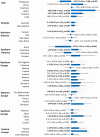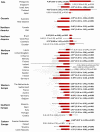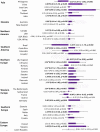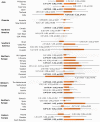Global incidence and mortality of breast cancer: a trend analysis
- PMID: 33592581
- PMCID: PMC7950292
- DOI: 10.18632/aging.202502
Global incidence and mortality of breast cancer: a trend analysis
Abstract
This study aimed to evaluate the global incidence and mortality trends of breast cancer among females by region and age in the past decade. We retrieved country-specific incidence and mortality data from the Global Cancer Observatory up to 2018 and Cancer Incidence in Five Continents volumes I-XI, the Nordic Cancer Registries, the Surveillance, Epidemiology, and End Results, and WHO mortality database up to 2016. The temporal patterns were using Average Annual Percent Change (AAPC) with the 95% confidence interval (CI) by joinpoint regression analysis. Most countries showed an increasing trend in incidence. For the older population aged ≥ 50 years, Japan (5.63, 4.90-6.36), Slovakia (3.63, 3.03-4.22), China (2.86, 2.00-3.72) reported the most prominent increase. For young females (<50 years), Japan (AAPC=3.81, 95% CI=2.71-4.93), Germany (AAPC=2.60, 95% CI=1.41-3.81) and Slovakia (1.91, 1.13-2.69) reported the most drastic rise. Similarly, 12 countries showed an incidence increase among women aged <40 years. As for mortality, the Philippines (4.36, 3.65-5.07), Thailand (4.35, 3.12-5.59), Colombia (0.75, 0.08-1.42), and Brazil (0.44, 0.19-0.68) reported a significant increase. The disease burden of breast cancer showed an increasing trend in a large number of populations. More preventive efforts are recommended for these countries. Further research should explore the underlying reasons for these epidemiological trends.
Keywords: breast cancer; epidemiology; incidence; mortality; trend analysis.
Conflict of interest statement
Figures







References
-
- Global Burden of Disease Cancer Collaborators. Global, regional, and national cancer incidence, mortality, years of life lost, years lived with disability, and disability-adjusted life-years for 29 cancer groups, 1990-2016. a systematic analysis for the Global Burden of Disease Study. JAMA Oncol. 2018; 4:1553–68. 10.1200/JCO.2018.36.15_suppl.1568 - DOI - PMC - PubMed
MeSH terms
LinkOut - more resources
Full Text Sources
Other Literature Sources
Medical
Research Materials
Miscellaneous

